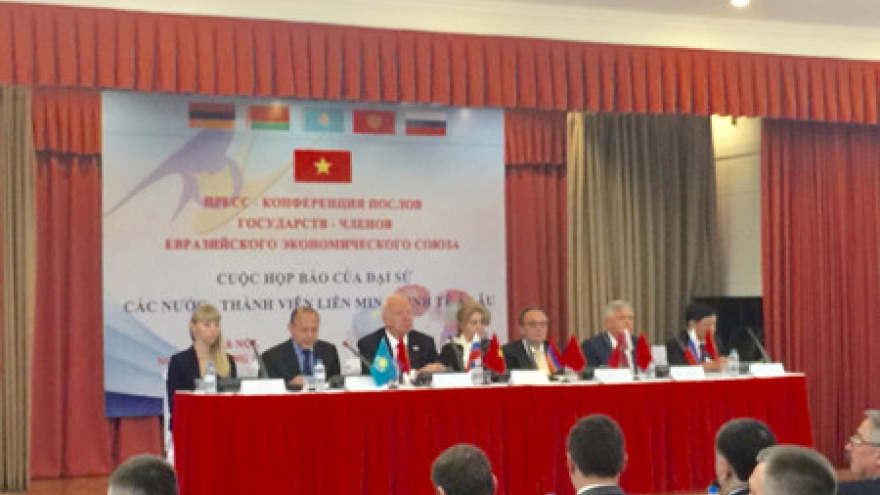Eurasian FTA to bring Russia onto trade leaderboard
Though under the radar, the Vietnam-Eurasian Economic Union FTA holds opportunities for both sides to increase exports in their respective markets.
Under the Vietnam-Eurasian Economic Union Free Trade Agreement (VEAEUFTA), inked on May 29, 2015 and entered into force on October 5, 2016, almost 90% of import tariffs will be reduced to 0% within 10 years.
Vietnam will immediately remove import tariffs on voer 59% of goods from the Eurasian Economic Union (EAEU)-comprising Russia, Belarus, Kazakhstan, Armenia, and Kyrgyzstan. These goods include meat products, wheat flour, alcohol, mechanical equipment, and steel products.
The tariffs on another 30% of goods will be gradually reduced to 0% over a transitional time period.
The average level of Vietnam’s duties on EAEU goods will drop from 10%-1%, while EAEU’s average import tariffs on Vietnamese goods will be reduced from 9.7%-2% in 2025.
 |
Many Russian firms feel optimistic about the VEAEUFTA’s coming into force.
Russia’s automaker GAZ Group said its commercial vehicle lines began to enjoy rax reductions last week. GAZ used to be famous in Vietnam via brand names Volga and GAZ 53 and 69. With the tax exemption, GAZ expects to regain its relationship with Vietnam.
Lorry import tariifs will be reduced from an average of 17% now to 0% by 2025.
“We are preparing to export our first completely-built units to Vietnam this year thanks to the VEAEUFTA, and we will also export spare auto parts to Vietnam next year”, said Andrey Kuznetsov, commercial development director of GAZ.
GAZ president Vadim Sorokin said the firm is interested in transferring high technology to Vietnamese partners, so that it can design vehicles on the spot. “Also, we will devlop our customer networks, technician training programmes, and auto maintenance systems in Vietnam”.
Other auto firms such as Ulyanovsky Avtomobilny Zavod and KAMAZ are also preparing to export their first batch of vehicles to Vietnam soon.
It is expected that from now until 2019, the tax reduction will save each Russian auto exporter over US$50 million per year.
“The VEAEUFTA has significantly enabled Russian firms to enter the Vietnamese market more easily, through their strengths in machinery, construction products, steel, and high-tech products”, said Suren Vardanyan, chairman of Russia’s Moscow Chamber of Trade and Industry. “Vietnam is also an important gateway for Russian firms to enter other ASEAN markets.”
In addition to automobiles, many other Russian items-such as processed foods, processed meat and fish, and milk-are being imported into Vietnam in bigger volumes. Russian firms do not want to miss any opportunity given by the VEAEUFTA, according to Russian Ambassador to Vietnam Konstantin Vnukov.
For example, he told VIR that Medipal Onko has opened a representative office in the country. Medipal Onko is a pharmaceutical firm which stands ready to export medicines to Vietnam, including cancer drugs.
According to Russia’s Federal Customs Service, the Vietnam-Russia two-way trade turnover reached US$3.9 billion last year, up 4% year-on-year. The figure hit US$2 billion in this year’s first seven months, up 11% year-on-year. It is expected to rise to US$4.5 billion for the whole year.
According to Vnukov, the VEAEUFTA can help increase bilateral trade between Vietnam and the EAEU to US$10 billion by 2020.




